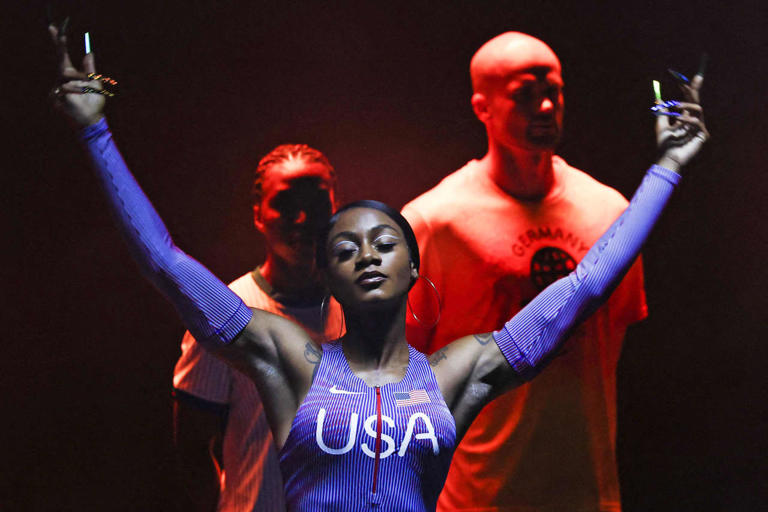Nike is currently navigating through a challenging phase, with its stock experiencing a dramatic decline. Following a disappointing June earnings report, Nike’s shares have plummeted nearly 20%. The company’s inability to meet revenue forecasts and its downward revision of future earnings expectations have significantly impacted investor confidence. As a result, Nike’s stock has dropped to its lowest level in over a decade. In contrast, its main rival, Adidas, has seen a remarkable resurgence, with its shares rising more than 25% this year, highlighting a stark contrast between the two sportswear giants.
This downturn has surprised many, including financial analysts and publications like Barron’s, which had earlier recommended Nike’s stock. Despite the current grim outlook, Barron’s and other observers believe that Nike’s substantial strengths provide a solid foundation for a potential rebound. The company’s iconic brand, the globally recognized swoosh, and its massive marketing budget are key assets that could drive a recovery. Nike’s historical ability to capitalize on major events, such as the upcoming Paris Olympics, further supports the expectation of a turnaround.
The stock’s current plight is a sharp departure from its performance in 2021 when it had a price-to-earnings ratio of 85. Today, Nike’s shares are trading at a mere 19, a significant drop that places the stock well below the S&P 500 average of 26. This marks the lowest valuation Nike has seen since 2012, reflecting a dramatic shift in market sentiment.
Analysts like Zachary Warring from CFRA suggest that, despite the challenges, Nike’s long-term prospects remain promising. Warring points out that Nike continues to have a robust balance sheet and maintains its position as a leading player in the global footwear market. The company’s continued dominance in sales, despite recent struggles, underscores its potential for recovery.
A key issue contributing to Nike’s current difficulties is the impact of its digital transformation efforts, spearheaded by CEO John Donahoe. Donahoe, who took over in 2020, aimed to pivot Nike towards a direct-to-consumer model. The strategy initially showed promise, with direct sales surging by 60% from 2019 to 2022. However, the company’s aggressive shift away from traditional retail partners like DSW and Macy’s led to a decline in wholesale sales. This move, coupled with slower growth in direct sales, has created a challenging environment for Nike.
Furthermore, Nike’s focus on digital sales has allowed competitors such as Hoka and On to gain traction in the running shoe market. The success of these brands has been reflected in their stock performances, with shares of Hoka’s parent company, Deckers Outdoor, and On Holding AG showing significant gains this year. Nike’s mistake, according to Wedbush analyst Tom Nikic, was becoming overly fixated on sales channels at the expense of product quality and market appeal.
Despite these setbacks, Nike’s market position remains formidable. The company leads the athletic footwear industry with annual sales of $51 billion, more than double that of Adidas. The global athletic footwear market is expected to grow by 40% over the next decade, offering significant opportunities for Nike to leverage its resources and expertise.
Nike’s considerable financial resources and marketing prowess remain key strengths. Last year, the company invested over $4 billion in demand creation and still achieved a profit of $5.7 billion. This financial strength provides Nike with the ability to invest in successful product lines and high-profile marketing campaigns. For instance, the recent launch of the Air Max Dn and the high-profile endorsement deal with WNBA star Caitlin Clark illustrate Nike’s ongoing commitment to innovation and marketing.
Looking ahead, Nike is set to benefit from the visibility and marketing opportunities associated with the Paris Olympics. The company has provided U.S. athletes with Nike gear, including Air Max Dn sneakers and track suits, which will be prominently featured during media appearances and medal ceremonies. This exposure could provide a much-needed boost to Nike’s brand and sales.
Nike’s past performance and resilience suggest that the current difficulties may be temporary. Historically, Nike has outperformed Adidas in many years, and while Adidas has gained the upper hand this year, the competition between the two companies remains intense and evolving. The fashion industry is dynamic, and trends in athletic footwear can shift rapidly. Nike’s strong brand and substantial marketing resources position it well to capitalize on future opportunities and potentially turn its fortunes around.
In summary, while Nike is facing significant challenges, its established brand, financial strength, and marketing capabilities offer a foundation for potential recovery. Investors may need to be patient, but Nike’s ability to leverage its assets and navigate through current difficulties suggests that the company could see a rebound in its stock performance in the future.
